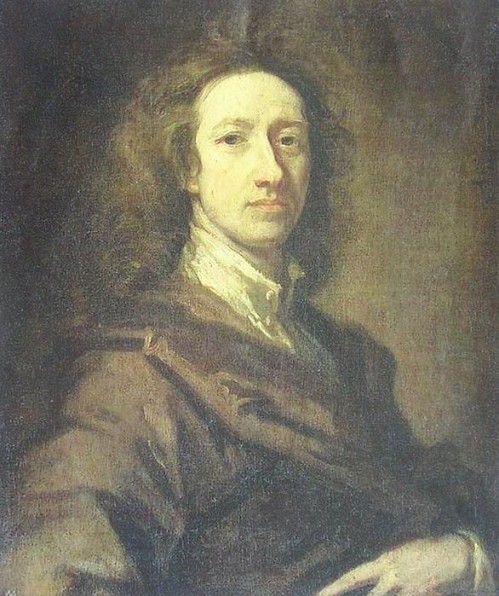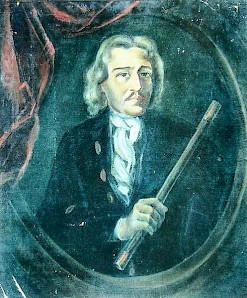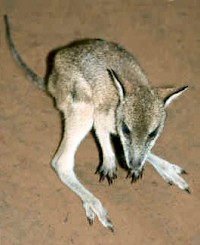Cornelis de Bruijn
Cornelis de Bruijn (c.1652-1727) was a Dutch artist and traveler. He is best known for his drawings of the ruins of Persepolis, the first reliable pictures of these palaces to be accessible for western scholars. His other visits included the Ottoman Empire, Egypt, Jerusalem, Russia, and the East Indies.
The East Indies

On 25 October 1705, Cornelis de Bruijn, having regained his health, boarded a vessel named Mydregt, which brought him from Gamron to the Dutch trading station Cochin in the southwest of India, where he stayed with officials of the VOC,note the Dutch East-Indian Company. De Bruijn was surprised by the dolphins and flying fish. From Cochin, he reached the island of Ceylon or Sri Lanka, where the Dutch had several trading posts, like Galle on the isle's south cape. De Bruijn stayed here long enough to observe a crocodile hunt, and includes a long description of the natural wealth of the island in his Travels into Moscovy, Persia, and the East Indies. After the celebration of Christmas and New Year he left Ceylon on 6 January 1706.

Seven weeks later, the Mydregt had reached the port of Batavia, the Dutch capital in the East Indies (modern Jakarta). The trip had not been entirely without danger. In Europe, France was still fighting against the other countries in the War of Spanish Succession,note and privateers were a risk.
Nor was Java, the main island in the Indonesian archipelago, peaceful. The VOC occupied Batavia and surroundings in the west, but the larger part of Java belonged to the kingdom of Mataram. Its king Amangkurat II had died, and his his brother Pangeran Puger and his son Amangkurat III contested the throne. Shortly before De Bruijn's arrival, Dutch troops had installed Puger, but his rival fled to eastern Java and launched a war against his uncle.

The new king still needed Dutch support and was forced to do many concessions; in fact, he had to give up all of western Java and allow the Dutch the right to go wherever they wanted in Mataram. The VOC was reorganizing its gains during De Bruijn's stay, and the war was still going on, so a visit to Mataram was impossible. In fact, De Bruijn's visit to Java was a bit of a disappointment.
The artist could stay on Struiswijk, the country estate of Joan van Hoorn, who was between 1704 and 1709 the Dutch governor-general. ("Struiswijk" was to become notorious as a prison and a Japanese POW-camp during the Second World War.) In return for the hospitality, De Bruijn painted his host's portrait, which has survived but is rather damaged.

Van Hoorn was responsible for a major decision in the VOC's economic policy. Until then, Batavia had been a production center of pepper, sugar, and rice, and a trade center for silk, porcelain, muscat, and tea. Van Hoorn ordered that in addition, coffee was to be produced on western Java, which would break the monopoly of the Arab traders of Mocca. A description of the way coffee is produced is included in the Travels into Moscovy, Persia, and the East Indies.
One of the nicest aspects of De Bruijn's stay was a visit to the little zoo that a VOC-official named Cornelis Kastelein owned at a country estate in a village called Weltevreden. De Bruijn liked a little animal that had already been baptized philander ("friend of man"), a small, kangaroo-like marsupial that is now called Dusky pademelon or -if you prefer its official name- Thylogale Brunii, which means "De Bruijn's pademelon". His account is not without importance, because this little animal is now a threatened species; the only relict population is probably on New Guinea, east of Port Moresby.

Another aspect of De Bruijn's account of the East Indies is a description of the castles of coral and tropical fish near the island Edam, which was close to Batavia. He also describes the Chinese who had been settled in Batavia by the VOC and produced sugar cane, which was used for the production of sugar and arak (brandy). In July 1706, after the rain season, De Bruijn spent some time with the Sultan of Bantam, a still independent state in the far west of Java. He greatly admired the dancers.
Yet, De Bruijn's book offered little that was not already known to the officials of the VOC, and they must have been disappointed with these parts of Travels into Moscovy, Persia, and the East Indies. Only for a general audience, it offered much entertaining information.
It seems that De Bruijn was not happy either, because he had plans to visit Coromandel in southeast India, but he was by now suffering from a skin affliction, painful legs, and troubles with his eyes, and decided that it was better to return home. Because the War of Spanish Succession was not yet over, the easiest route - circumnavigating Africa and continuing over the Atlantic - was impossible, so De Bruijn had to visit Persia and Russia again. He boarded the recently built Prins Eugenius (named after one of the commanders in the War of Spanish Succession), and on 25 August 1706, after a stay of a half year, De Bruijn started the return voyage. His luggage was sent by another ship.